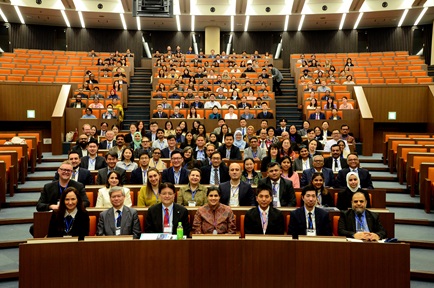Is it different this time for emerging markets
Mark Twain once famously said, "History does not repeat itself but it does rhyme." More than 20 years have passed since the Asian Financial Crisis and it appears that the rhythm of frenzies and crashes has bypassed emerging market.
Mark Twain once famously said, "History does not repeat itself but it does rhyme." More than 20 years have passed since the Asian Financial Crisis and it appears that the rhythm of frenzies and crashes has bypassed emerging market. Or has it?
Consider the evolution of financial crises over the past 40 years since the end of the Bretton Woods system.
The commodity boom in 1970s created an economic boom in Latin American fed largely by US dollar denominated debt. However, the bloc quickly plunged into a debt crisis when the Federal Reserve responded to the stagflationary landscape with a massive rate hike in the early 1980s. That was the first emerging market crisis post-Bretton Woods.
Capital quickly flowed into Japan, the world’s manufacturer of very high-quality products in 1980s, especially after the Plaza Accord where the yen appreciated substantially. That created a huge asset bubble that prompted the Bank of Japan to raise interest rates dramatically, leading to a Balance Sheet crisis that continues to plague the economy today. This was a developed market crisis.
Following the Japanese crisis, capital made its way to Southeast Asia and some parts of Northeast Asia, in countries like Hong Kong, South Korea and Taiwan. As cost of credit rose after a hiking cycle by the Fed in the mid-1990s and the euphoria surrounding the NASDAQ, these countries went into the same debt related crisis that hit Latin America a decade previously. This 1990s Asian Financial Crisis was an emerging market crisis.
The next financial crisis has its epicentre in the US, where years of ultra-loose monetary policy after the bursting of the NASDAQ bubble created the sub-prime bubble. The primary cause of the crisis was an overextended economy and, yes, a rate hike response from the Fed to cool the economy. The subprime crisis was essentially a developed market crisis.
Hence, the rhythm of financial crises over past 40 years since the end of the Bretton Woods system is as follows: emerging market to developed market to emerging market to developed market.
If Mark Twain is right, the next crisis ought to take place in emerging markets.
The reason for financial crises to toggle between emerging and developed market is because frenzies and crashes are largely monetary phenomena. After the end of the fixed-exchange rate regime of the Bretton Woods system, global capital is free to flow to countries with the highest potential return in more persistent and impactful ways. A pinpoint focus of capital on a specific region creates a frenzy that prompts a tightening from its monetary authorities. Central banks tend to overshoot and ultimately crash the market. While the just-crashed market mends itself, capital flows to the relatively unaffected parts of the world, creates a bubble there, their central banks tighten, overshoot, and crashes the market. And how capital flows repeat.
Since frenzies and crashes are largely monetary phenomena, and emerging markets are next in line, what will prompt capital to flee these markets?
Markets react aggressively to shocks. One potential shock is underestimating how fast and how much the Federal Reserve is raising interest rate. So far, the market is sanguine about the Fed’s tightening trajectory because of the absence of inflation. However, the attached table shows that besides actual inflation readings and wage growth, all key economic indicators are much better than before the sub-prime crisis.
But we know why inflation has been subdue – low and stable oil prices. We also know that inflation is not only cost-push. It can also be demand-pull. Wages are not falling; they are merely not growing as fast as pre-crisis. As we observe in the second-half of 1990s, low and stable oil prices did not prevent strong aggregate demand from lifting inflation. The Fed was caught behind the curve in its tightening that time. Overshoot in 1999 and crashed the NASDAQ bubble.
If the Fed is indeed behind the curve this time round, the market will have to adjust to an unexpectedly more aggressive Fed. The reduction in risk would likely send asset prices lower as investors reduce their risky investments.
A more aggressive Fed hike a potential shock. Another could be the bursting of the Bitcoin bubble. The list goes on.
Importantly, when the dust settles after the sell-off, the market will assess where to invest and gravitate towards markets with significant potential upside. They are likely to be found in developed markets (and perhaps China) that are creating value in frontier technologies that will affect how we live and work. None of them would be found in emerging markets!
If indeed emerging markets are next in line for a financial crisis, which ones will suffer the most?
Naturally, it will be those with no idea on how to create value in the new economy and do not have sufficient barriers to prevent capital flight. In particular, emerging markets that have relied on massive capital inflows to boost a fundamentally commodities reliant economy.
So, what should emerging markets do in order to lessen, not prevent, the blow of the impending crisis. First, they should stop being complacent. They should take a leaf from the Chinese who are rigorously analysing their debt situation and stress test their banks. For the latter, they should consider fat tail events and not just reasonably risky ones. Remember, these measures will not help a country avoid the crisis, but they will allow it to prepare for the absolute worst and perhaps how to best deal with it.
Countries that are well-prepared to manage a financial crisis will be able to take advantage of the next up cycle.
By definition, a financial crisis happens without any warning. Worse is to believe that it will never happen. It is indeed dangerous to believe that "this time is different".
About the author
Lee Boon Keng is Associate Professor of Banking and Finance, and Director of the Centre for Applied Financial Education (CAFE) at Nanyang Business School, NTU.
This commentary was published in The Business Times on 21 December 2017.







